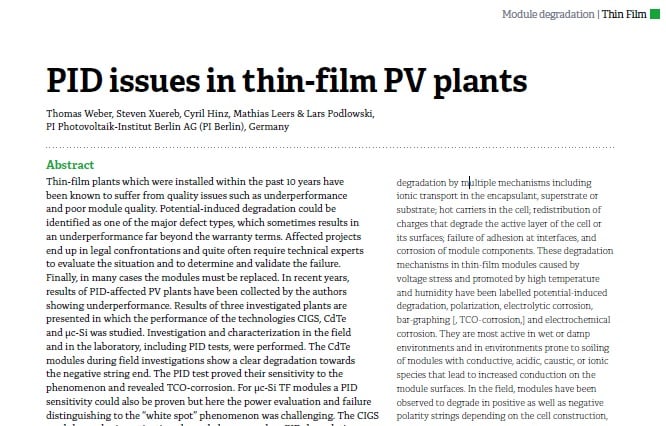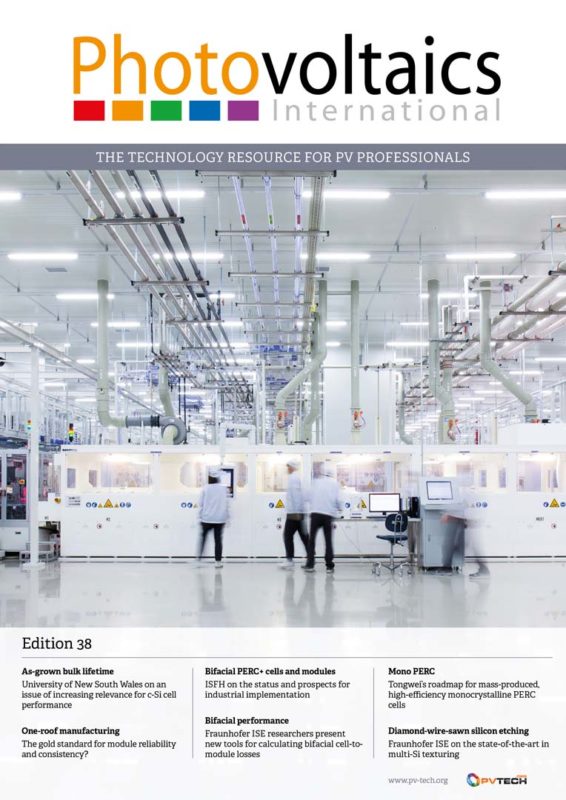By Thomas Weber, PI Photovoltaik-Institut Berlin AG (PI Berlin); Steven Xuereb, PI Photovoltaik-Institut Berlin AG (PI Berlin); Cyril Hinz, PI Photovoltaik-Institut Berlin AG (PI Berlin); Mathias Leers, PI Photovoltaik-Institut Berlin AG (PI Berlin); Lars Podlowski, PI Photovoltaik-Institut Berlin AG (PI Berlin)
Nowadays, there is a worldwide production capacity of about 5GW of thin-film module technology. In total, an estimated cumulative installed capacity of 15 to 24GW exists (5-8% of 300GW installed
worldwide in 2016). But how serious is the threat of PID in this thin-film fleet?



